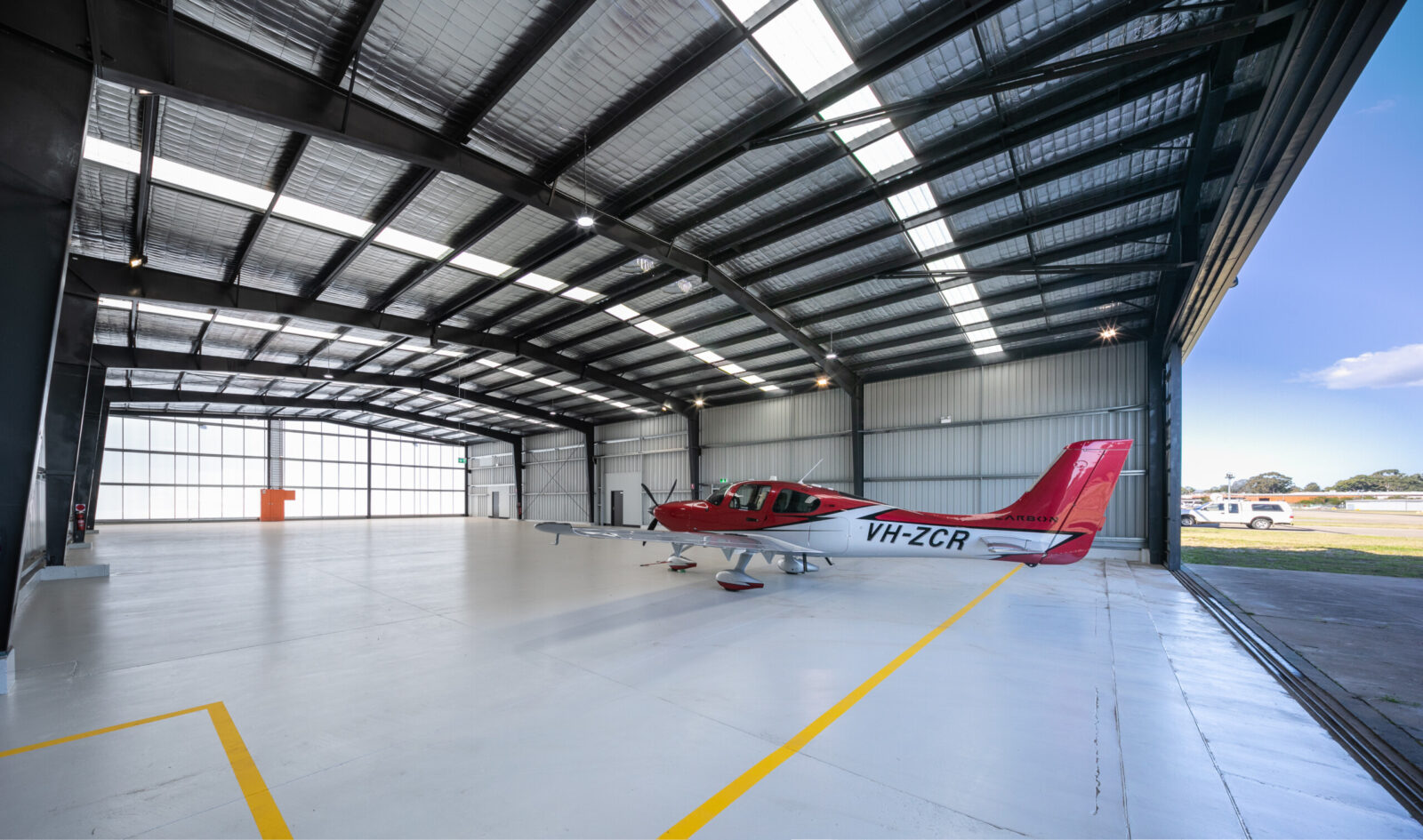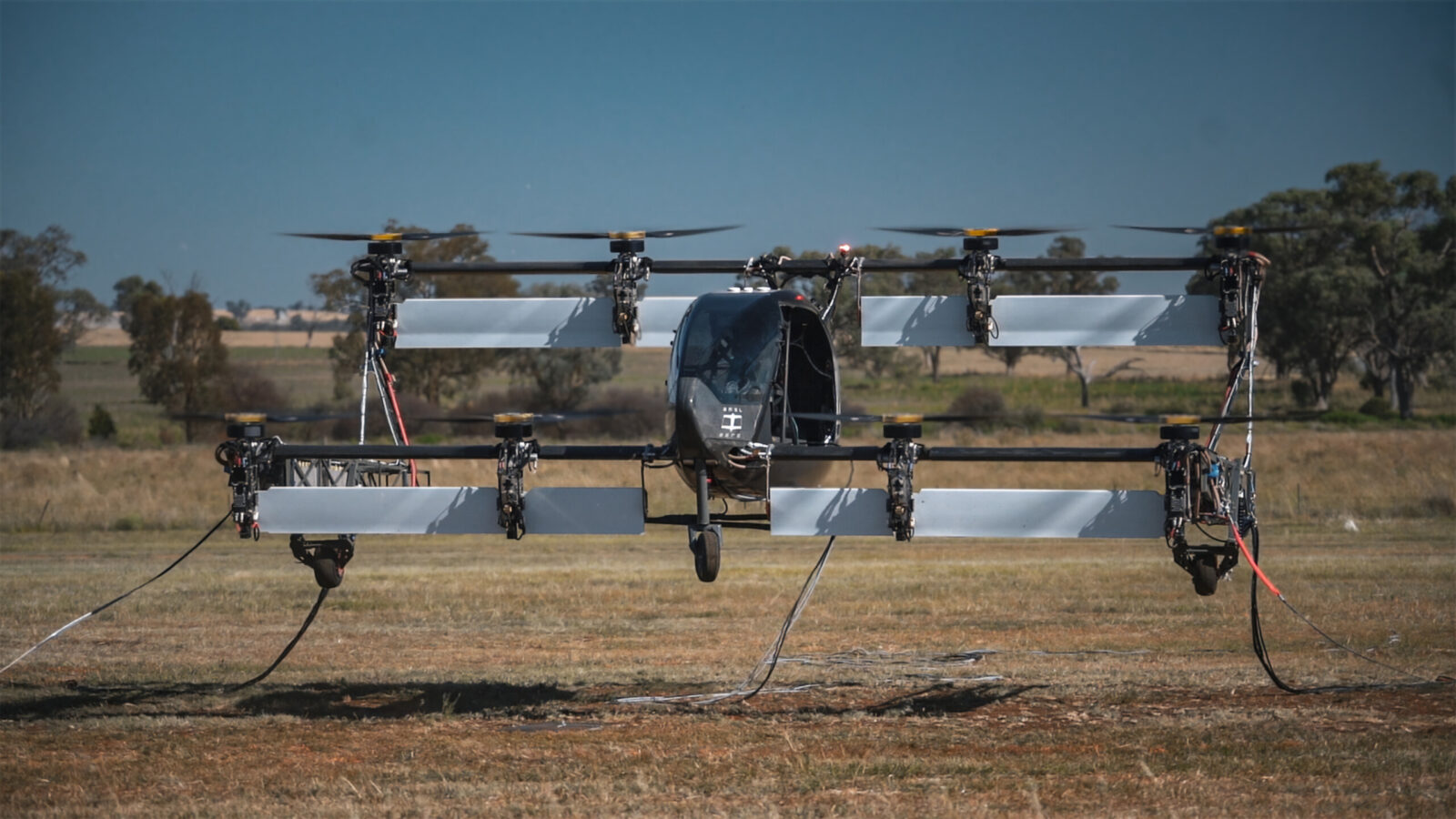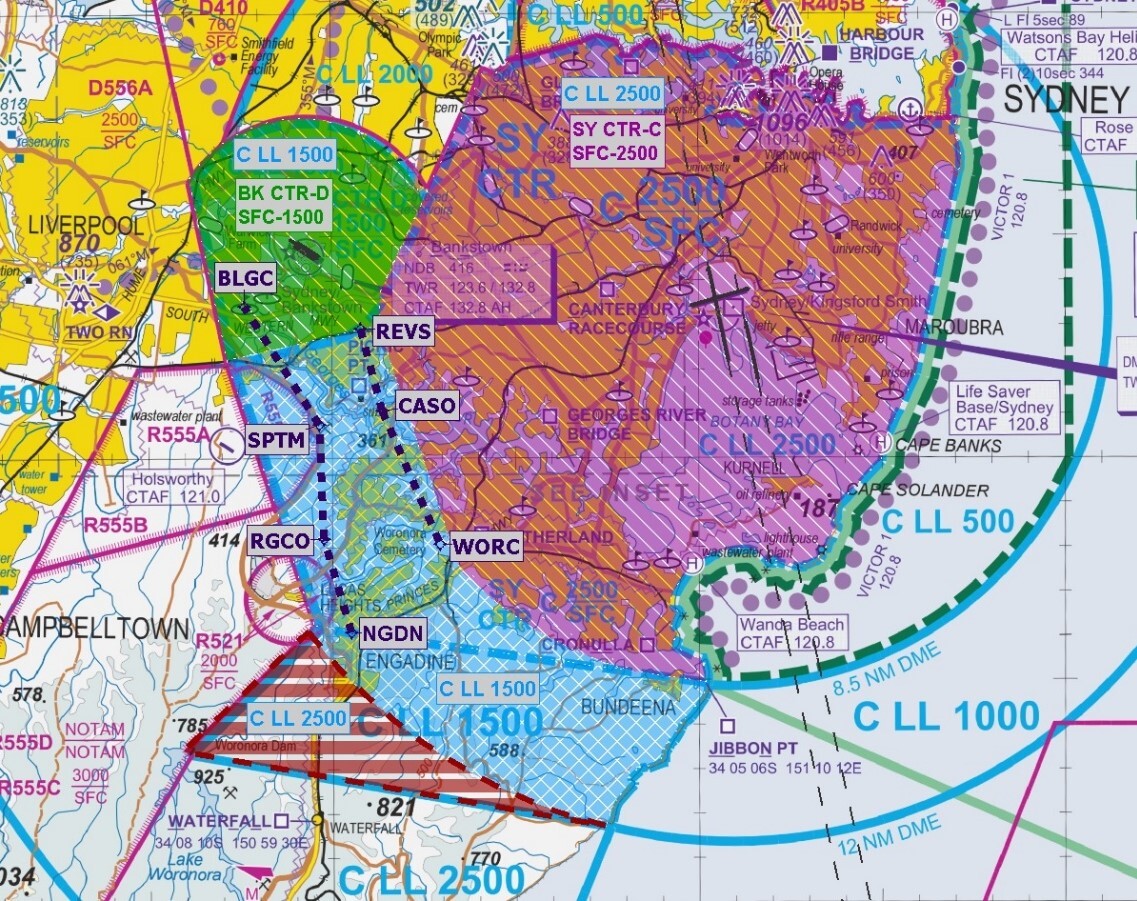Supporting aviation
Securing the sustainable operation and growth of general aviation
Investing in aviation facilities, infrastructure and growth
With more than $530 million invested in our precincts over the past decade and a further $120 million in the forward investment pipeline, we are committed to the continued sustainable growth and evolution of general aviation and our airports.
We have made substantial investments in new and enhanced general aviation infrastructure and facilities across Bankstown Airport and Camden Airport, including:
- Purpose-built hangars and facilities for PolAir and Toll Aviation emergency services
- Upgrades to airfield ground lighting
- Major ongoing upgrade to airside pavements at Bankstown Airport
- Major upgrades to key airport roads and stormwater infrastructure at Bankstown Airport
- Major upgrades to the carpark and stormwater infrastructure at Camden Airport and the installation of new security perimeter fencing
- Refurbishment of World War II-era hangars at Camden Airport
- Delivery of a new aviation hangar facility at 14 Miles Street, Bankstown Airport
Looking ahead, our Aviation Hangar Project Major Development Plan will deliver two new aircraft hangar buildings for up to 10 separate operations at Bankstown Airport, including for emergency services, flight schools and Advanced Air Mobility operators.
Our Aviation Microsites program will deliver a further eight new hangars across Bankstown Airport to support diverse aviation needs.
We are also proud to support essential community aviation services, including our major partnership with Little Wings. Our sponsorship will enable the non-profit organisation to deliver an extra 65 missions a year for seriously ill children in regional NSW, Queensland and the ACT.
Our support for community aviation clubs is enabling future generations of aviators, including the Royal Aero Club of NSW, Scouts Australia, Australian Air Force Cadets, Australian Army Cadets and Moorebank Air League.
We are dedicated to supporting and advocating on behalf of our customers and the general aviation sector to ensure a strong and sustainable future for our precincts and the nation.

Sustainable aviation technologies
General Aviation airports are strongly positioned to be the launching pad for emerging aviation technologies and the transition to net zero.
Metro General Aviation airports, in particular, are well placed to support the development and adoption of Advanced Air Mobility (AAM) – including electric and hydrogen-powered aircraft and drones – which will enhance the efficiency, scope and sustainability of essential services such as patient transfers, search-and-rescue missions and flight training, while also delivering faster freight deliveries and city commutes and enhanced regional connectivity.
We endorse the statement in the Commonwealth Government’s Aviation Green Paper, released in September 2023, that Australia is positioning itself to become a leader in the uptake and development of such emerging technologies.
Government support will be critical to delivering that opportunity and the broader evolution of the aviation sector towards net zero.
Our submission to the Green Paper calls for:
- The Commonwealth Government to establish an Aviation Infrastructure Fund for Metro General Aviation airports, to facilitate, develop and support emerging aviation technologies, AAM and net zero operations
- The Commonwealth Government to establish an Aviation Innovation Fund targeted towards the adoption of emerging aviation technologies by aviation operators and the evolution of Australian aviation
- A whole-of-airspace review of key capital city markets to facilitate the forecast tripling of aircraft movements by 2040-50, driven by the uptake of AAM aircraft
- Streamlining development processes and approvals for innovation projects that support emerging aviation technologies and AAM

Southeast VFR Corridor
CASA, in consultation with Airservices Australia, has announced a proposal to reclassify a portion of airspace southeast of Bankstown Airport to uncontrolled airspace and create a southeast corridor for use by all aircraft flying under Visual Flight Rules (VFR), up to 1500ft.
AMG joins our customers in supporting the proposed Bankstown Airport Southeast VFR Corridor to:
- Reduce airspace risks associated with the constrained nature of the Bankstown control zone and sustained growth in air traffic in the region;
- Provide better access to Sydney flight training areas; and
- Provide equitable and efficient access for airspace users.
Submissions and further consultation
Submissions to the CASA proposal closed on 22 October 2024. AMG’s submission in support of the proposal is available to read below.
Airservices Australia and CASA will provide additional engagement and consultation opportunities in early 2025.

Western Sydney International Airport
Airspace changes in Greater Sydney due to the commencement of Western Sydney International Airport (WSI) in 2026 will have significant impacts on General Aviation operations and services.
The WSI Draft Environmental Impact Statement (EIS), released in October 2023, confirms:
- The loss of a large volume of airspace currently used for dedicated flight training at Bankstown Airport and changes to regulatory procedures and requirements for flight paths to and from Bankstown Airport and Camden Airport
- Inherent risks and hazards for all aircraft associated with the introduction of additional aircraft movements in the Greater Sydney Basin, including increased risk of aircraft crashes and wildlife strike
- Community impacts due to increases in aircraft noise exposure, aircraft emissions, and potential loss of visual amenity and biodiversity.
AMG submission reveals sky high costs and safety risks due to WSI
As detailed in AMG’s submission to the WSI Draft EIS, lodged in January 2024, airspace changes related to the new airport will impose substantial economic and business costs on flight training schools, due to increased flying times, distances and schedules, along with greater fuel and maintenance costs. Some flight schools may be forced to contract or close their operations as a result – with a forecast fall of 20 per cent in student numbers.
AMG’s submission also highlights significant operational and economic impacts on General Aviation operators and services more broadly, including increased compliance costs, emissions and noise exposure.
AMG’s submission estimates the economic impacts on Bankstown Airport and Camden Airport will be $76 million in 2026 alone – 5 times the figure in the Draft EIS.
Amid a global pilot shortage and growing aviation demand, such costs should concern the Government greatly. We are working alongside and for our customers to safeguard their operations, including calling for:
- Government funding to support General Aviation, including investment in expanded operations at Camden Airport
- Compensation to impacted General Aviation businesses
- Delivery of the proposed Southeast VFR Corridor to mitigate economic costs and safety risks for aircraft at Bankstown Airport
- An airspace review of Greater Sydney to ensure safe and equitable access for all aircraft and to minimise safety risks and hazards
- Government support to future proof flight training operations and General Aviation at Bankstown Airport and Camden Airport, including funding for flight schools to upgrade to electric-hydrogen aircraft and to upskill current and future pilots in emerging aviation technologies.

